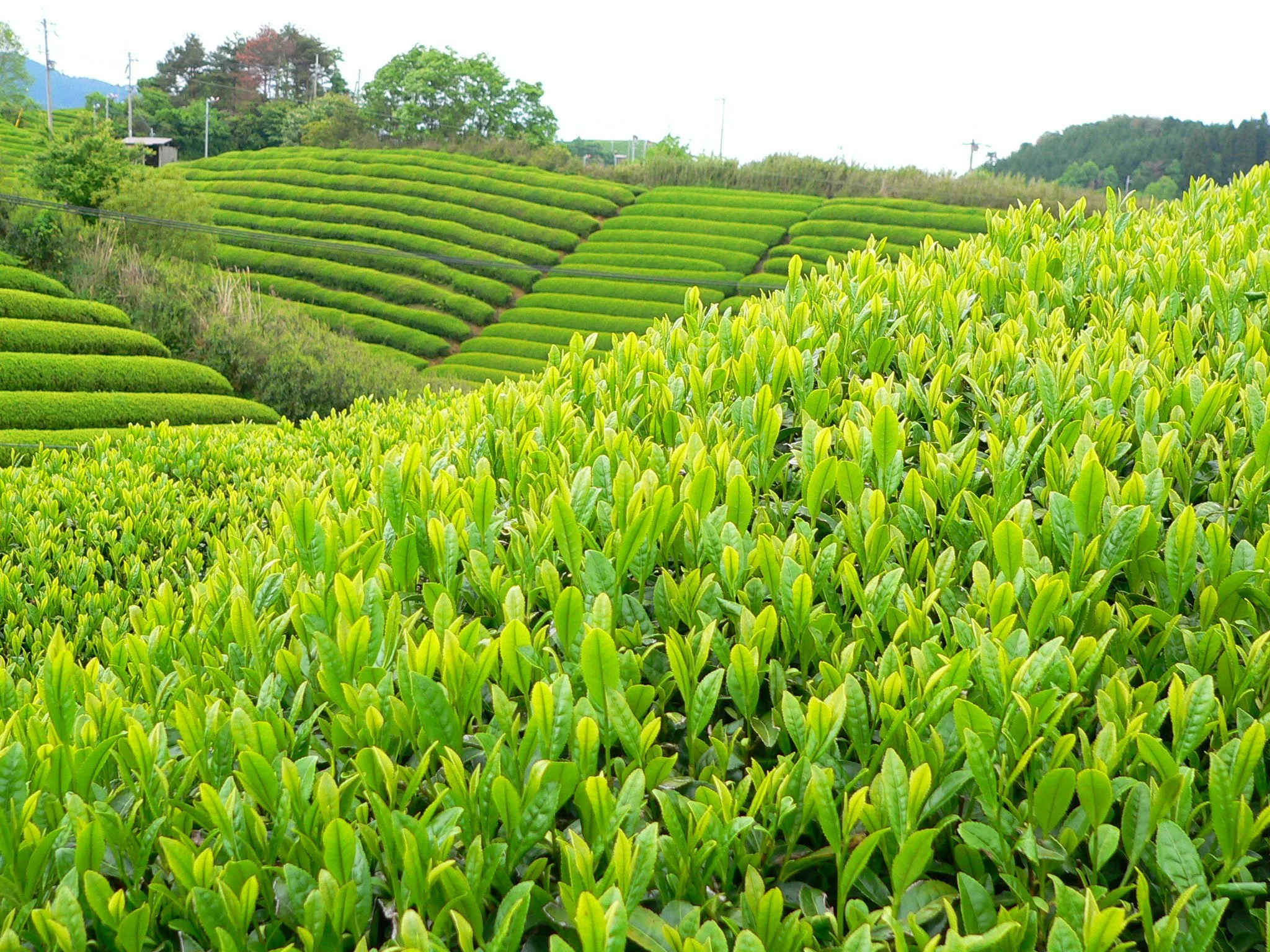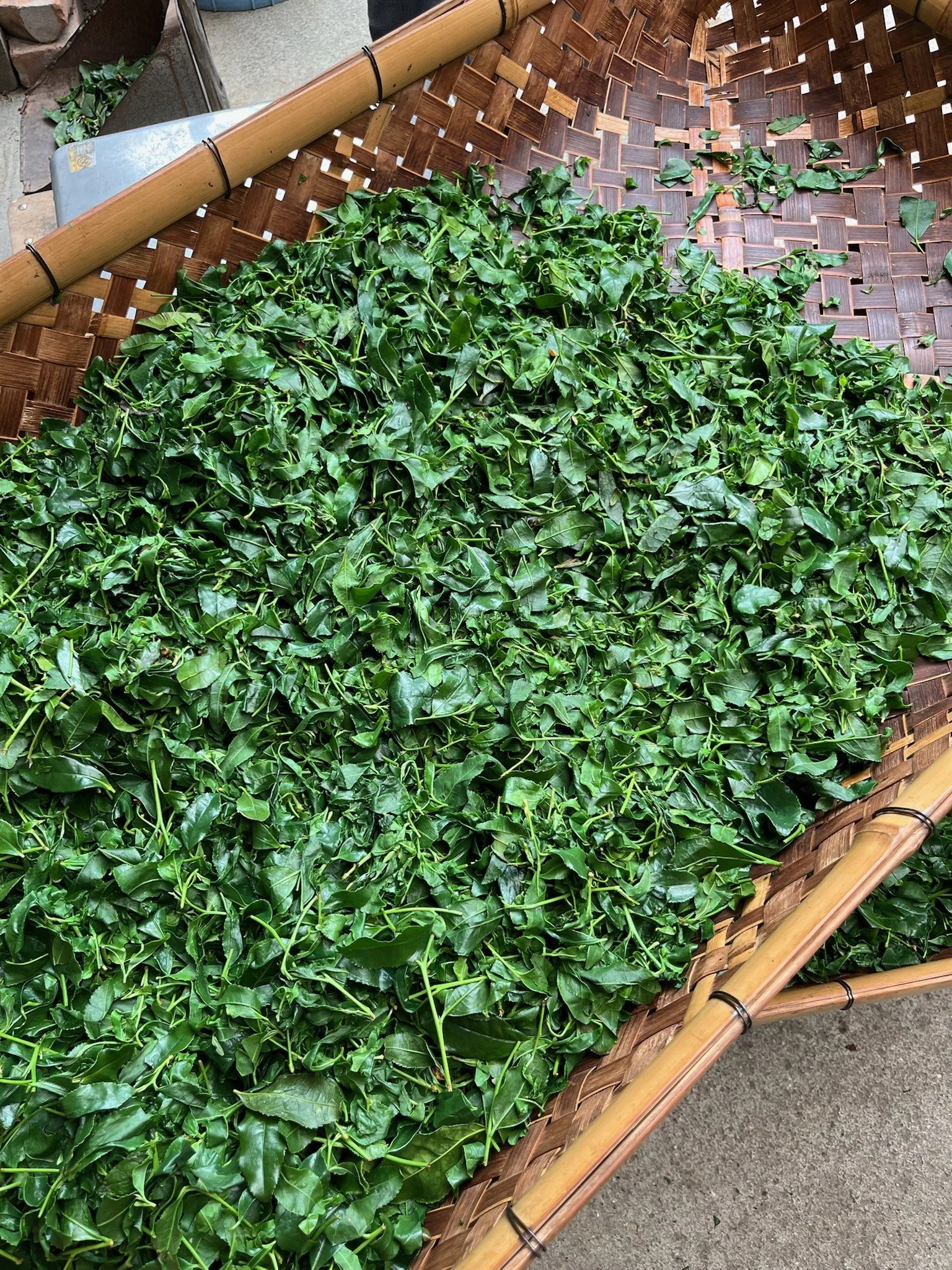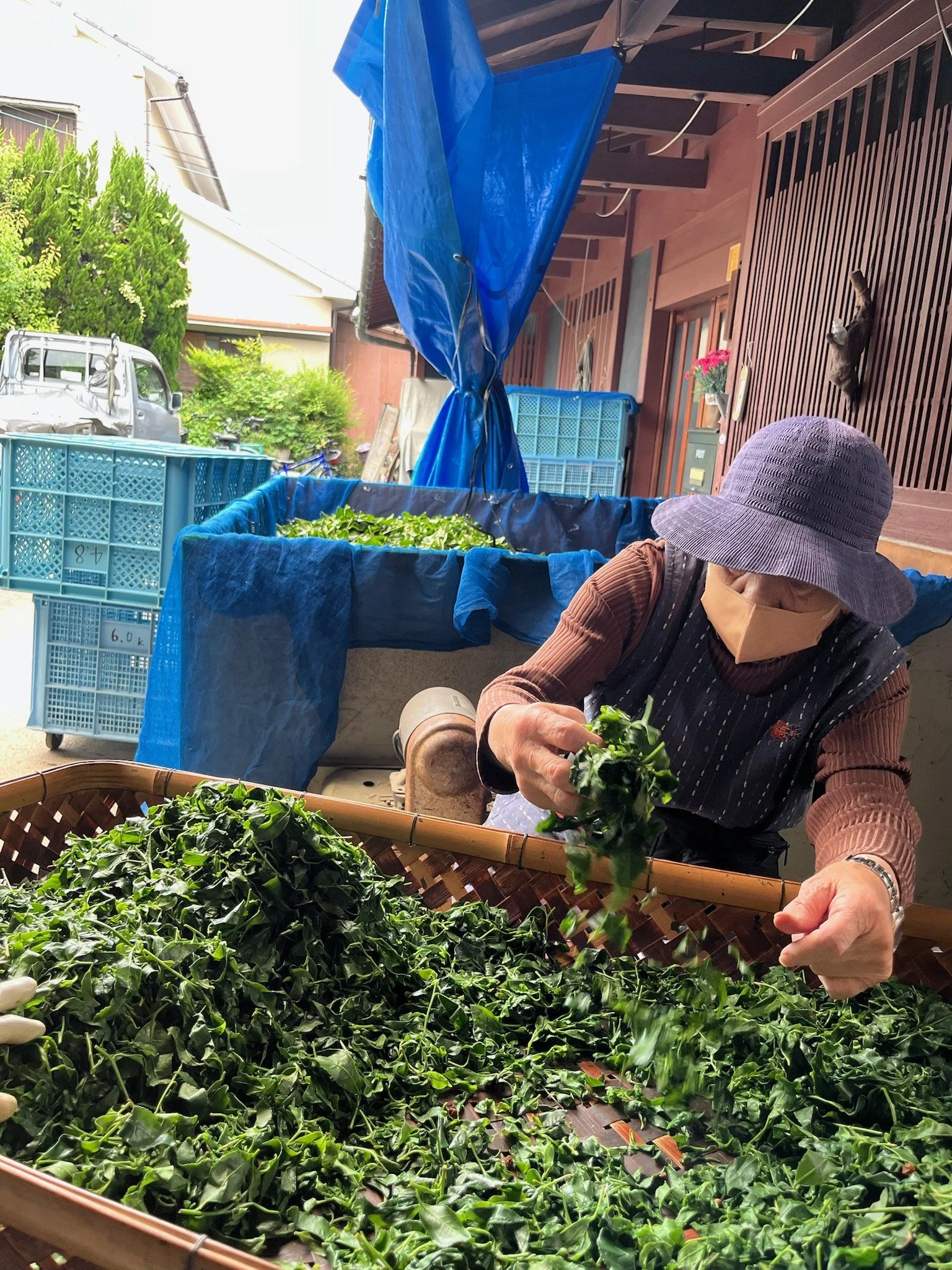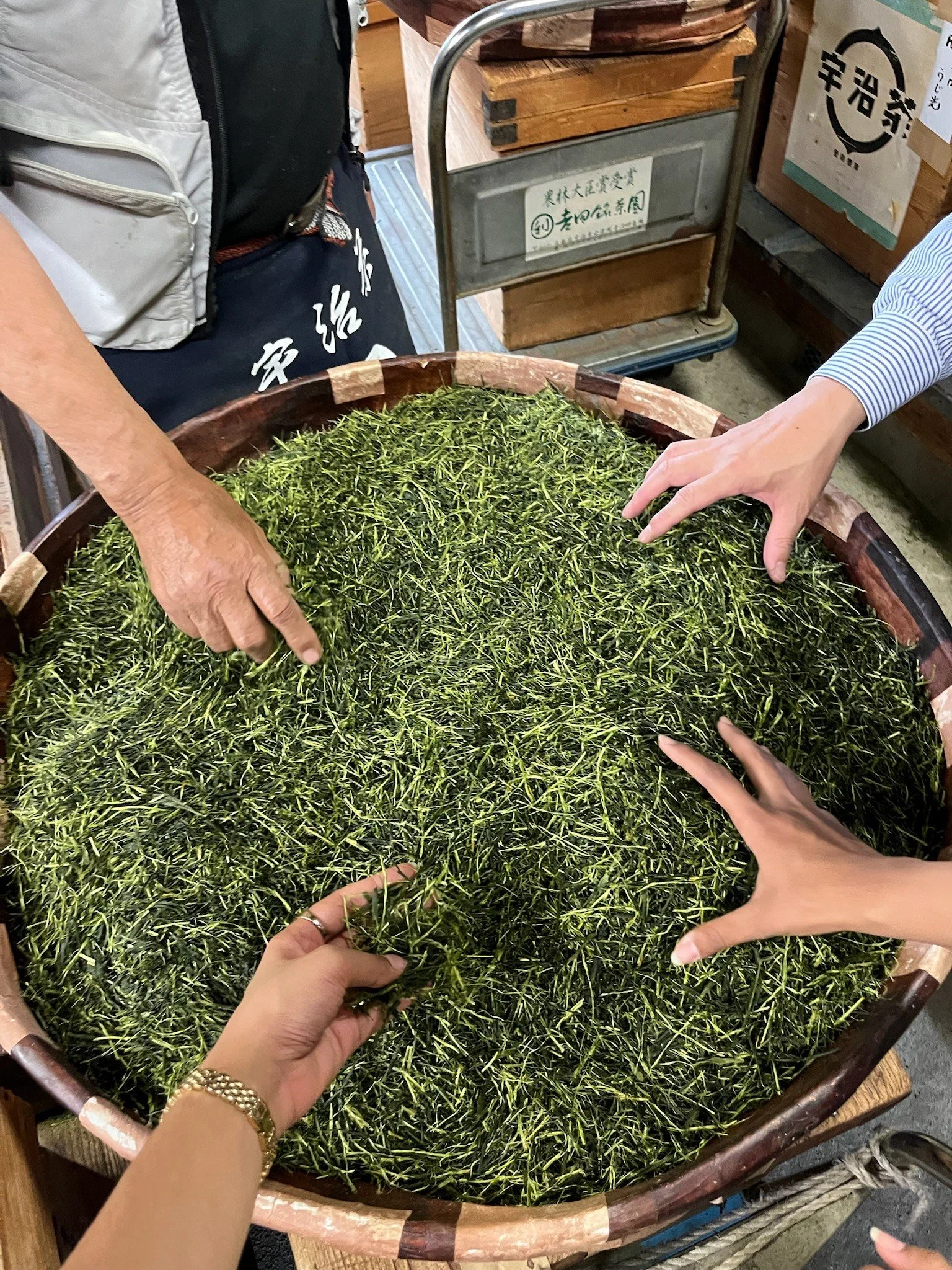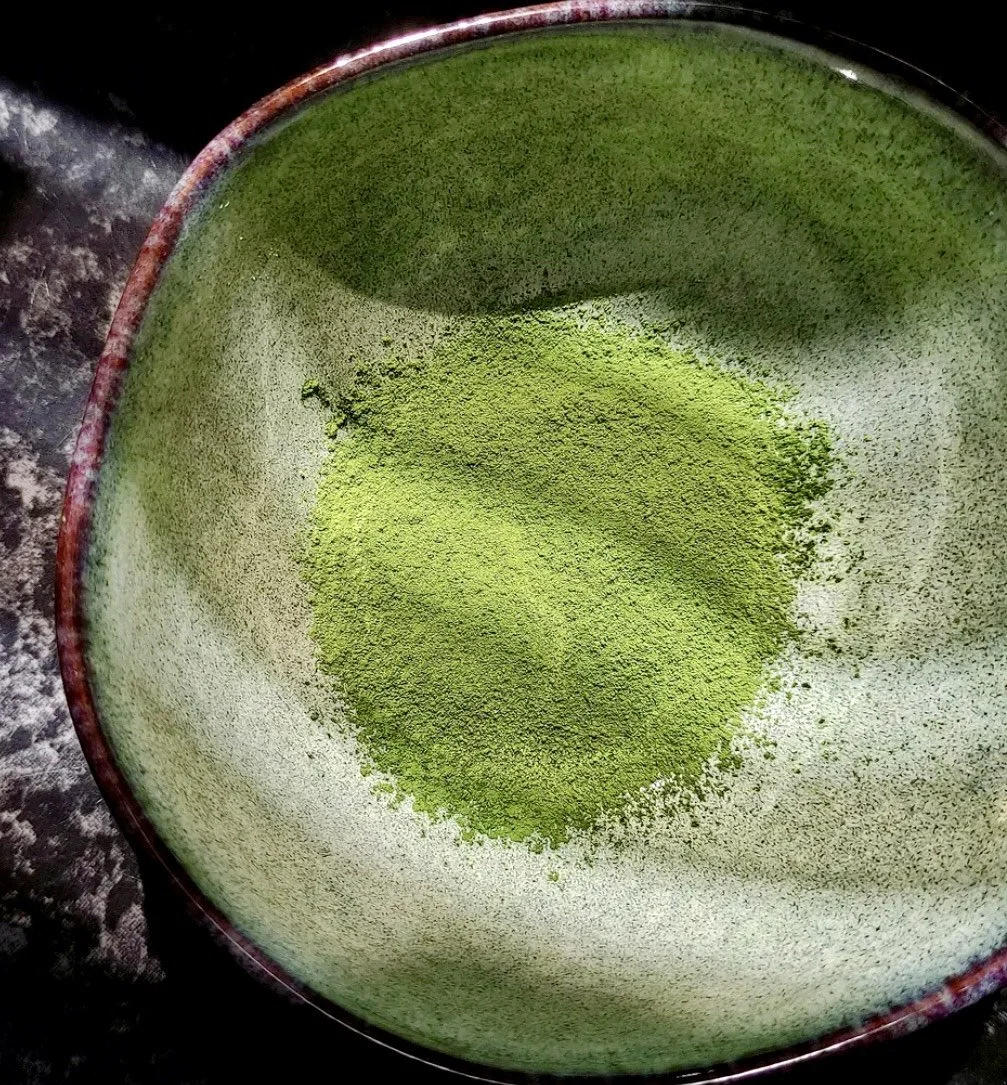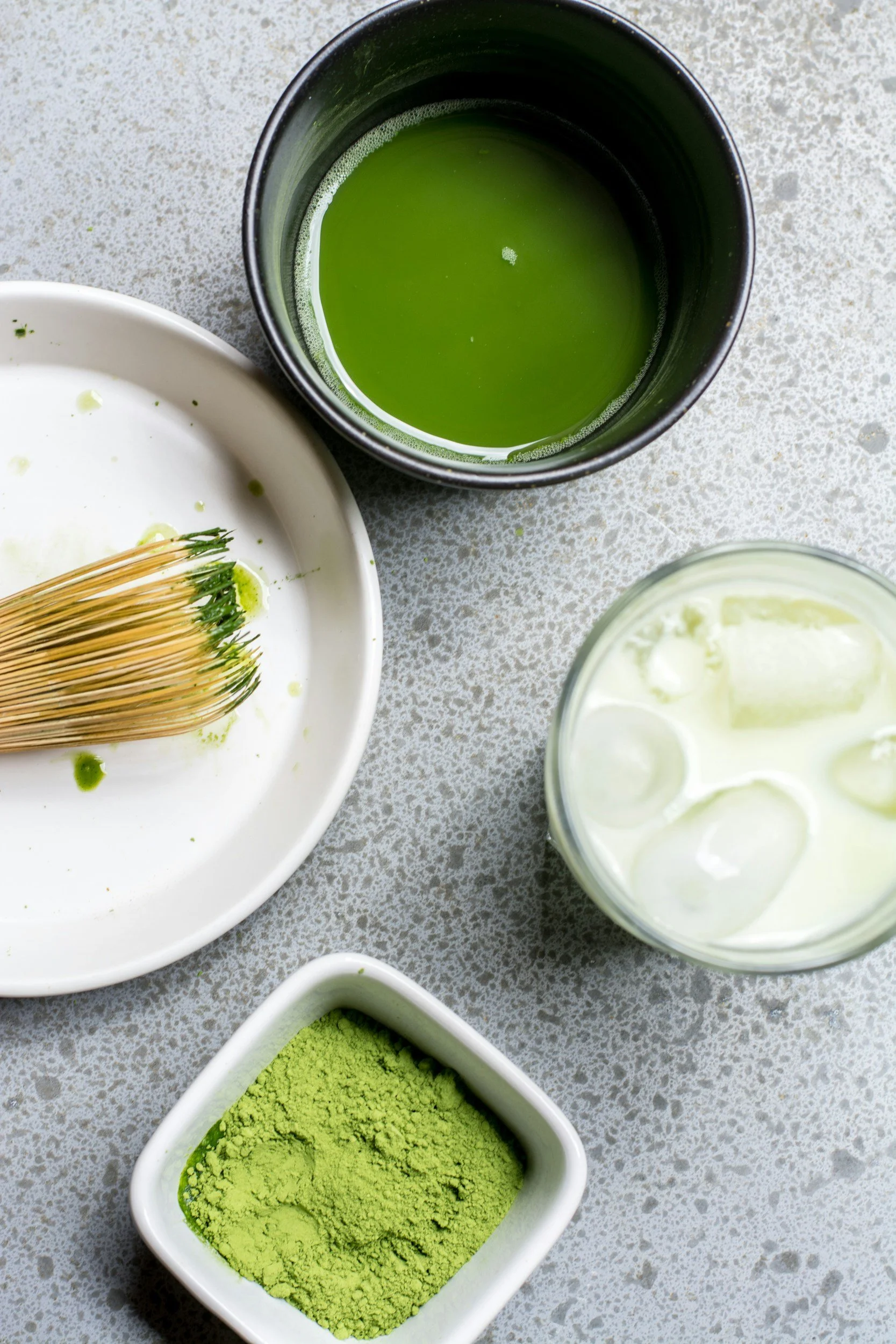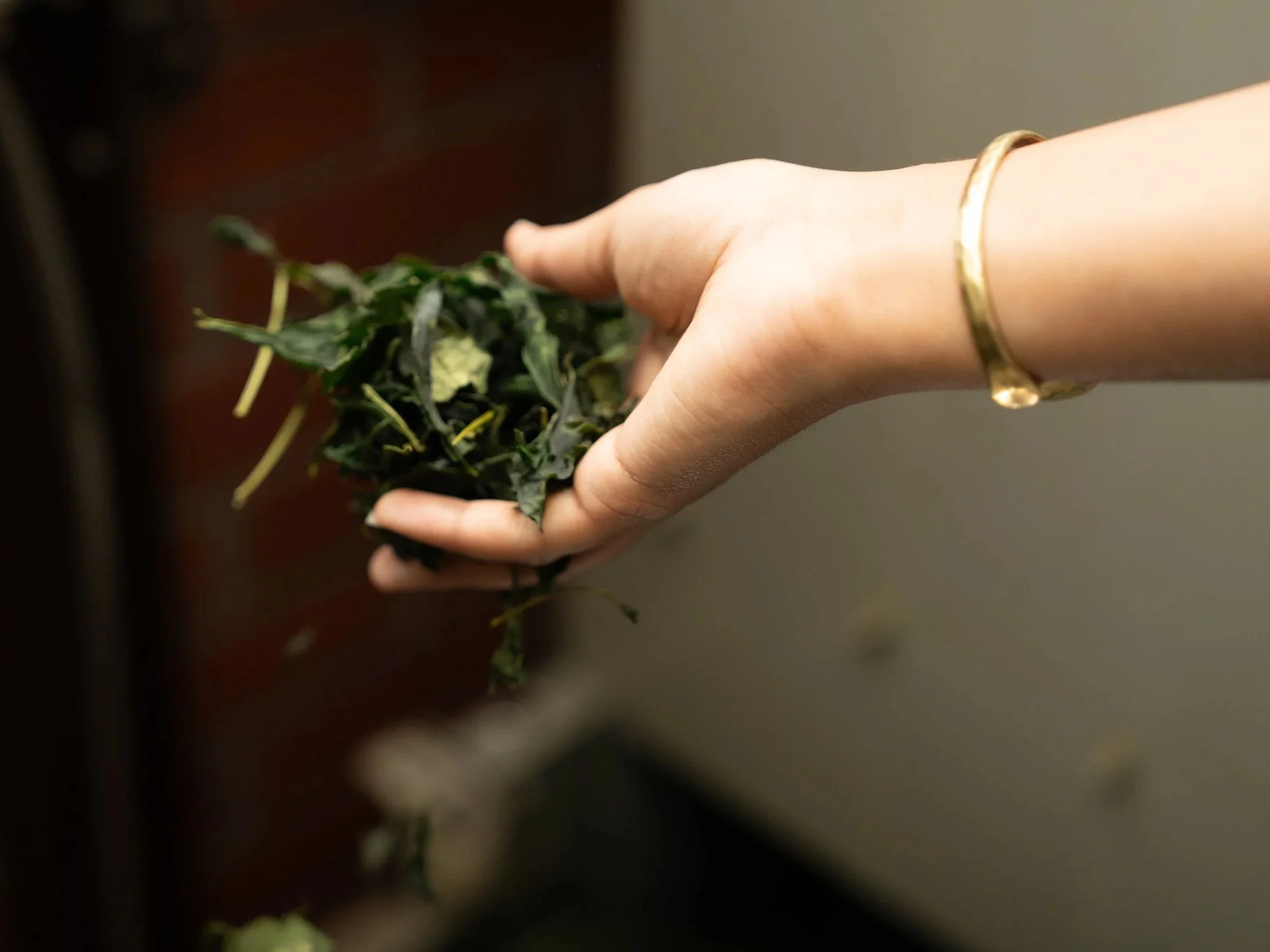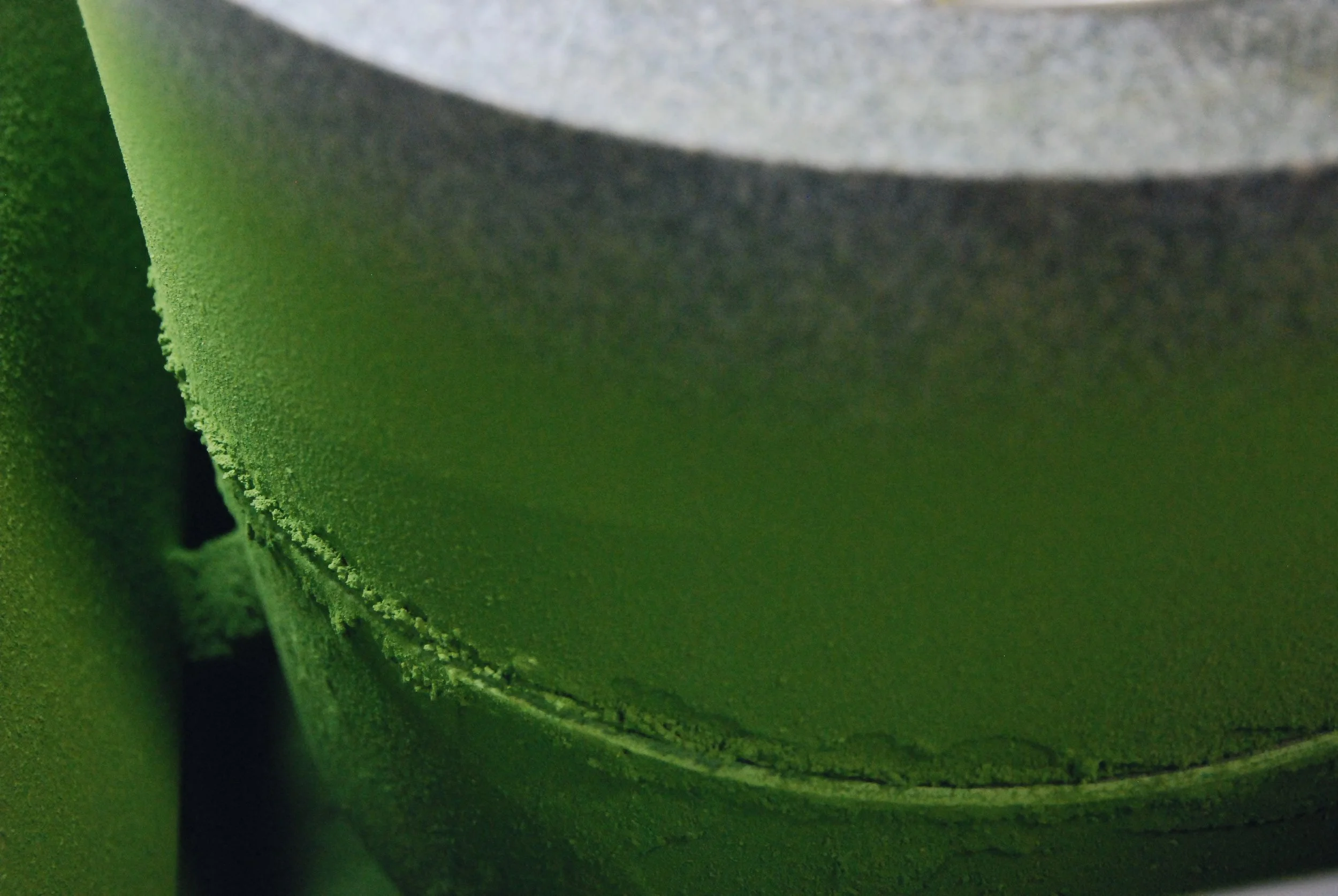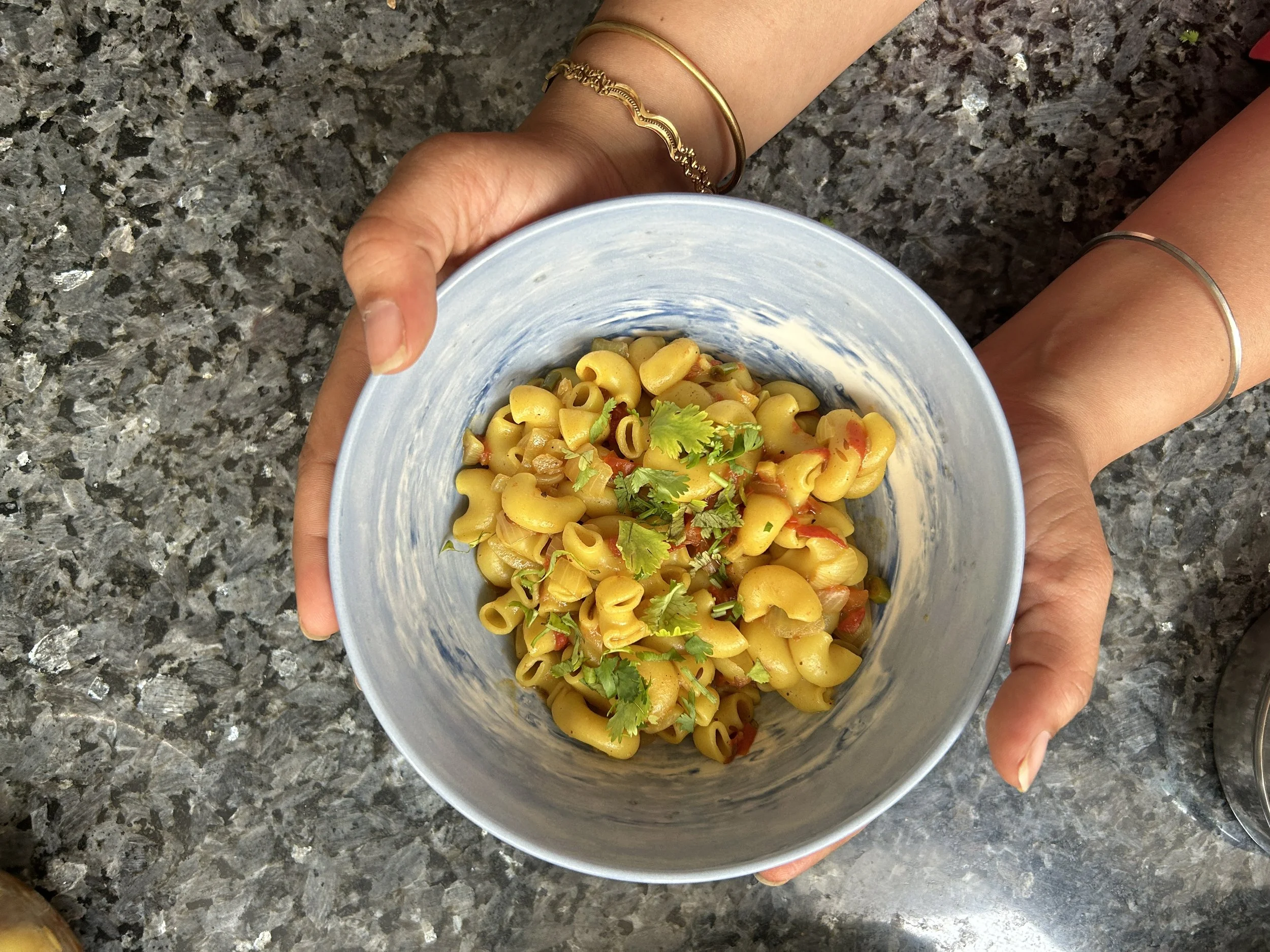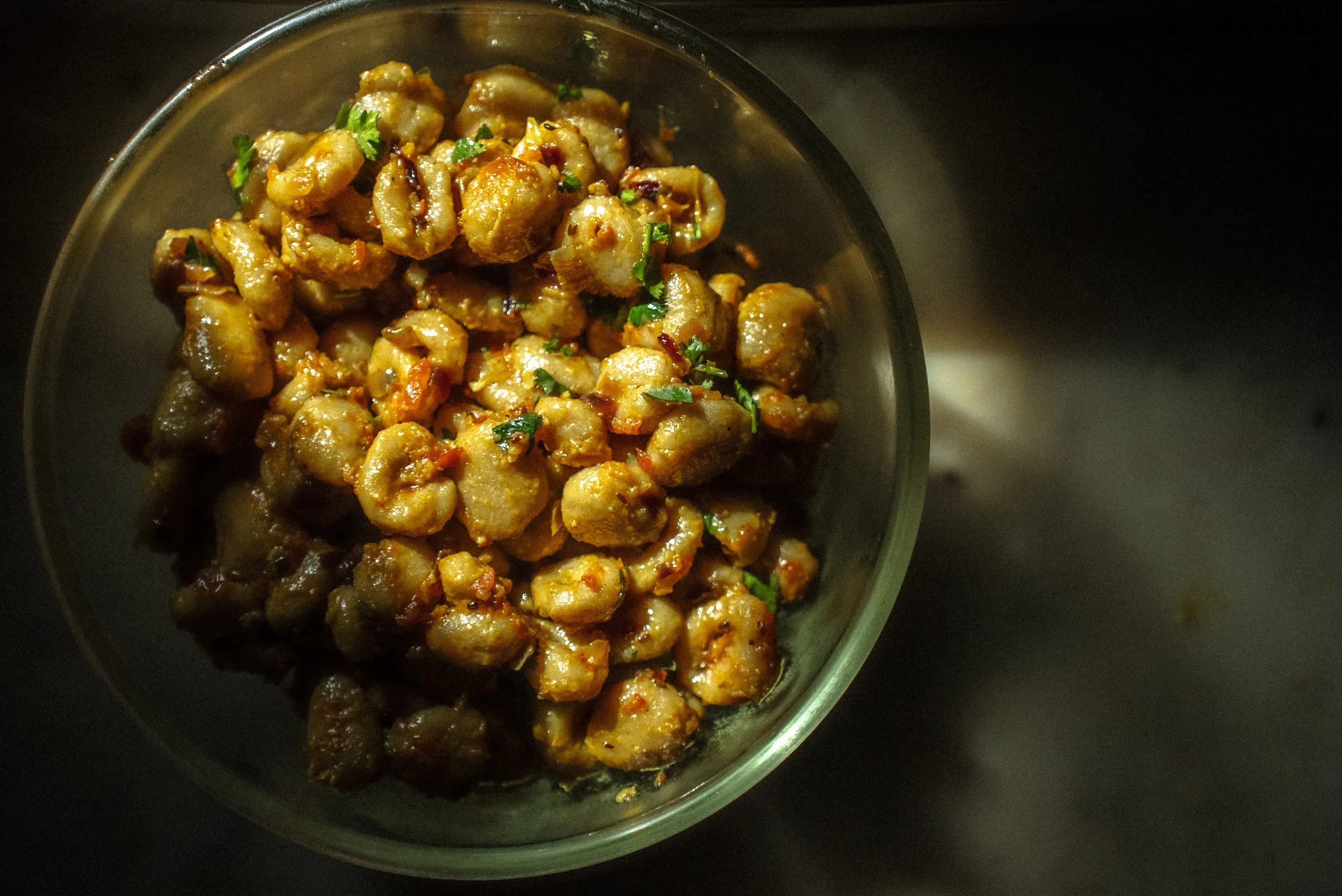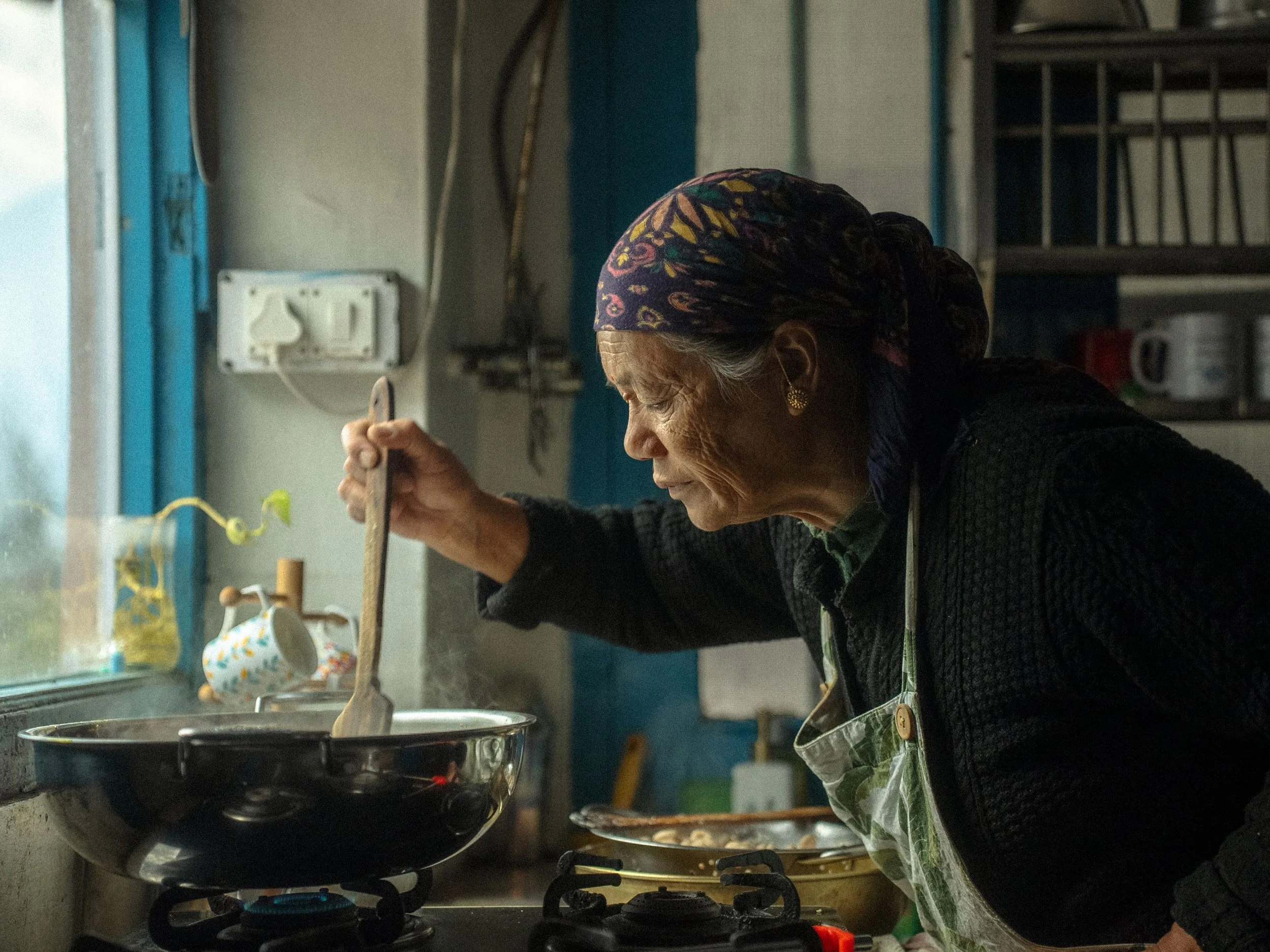A Sommelier’s Field Notes to the World of Matcha
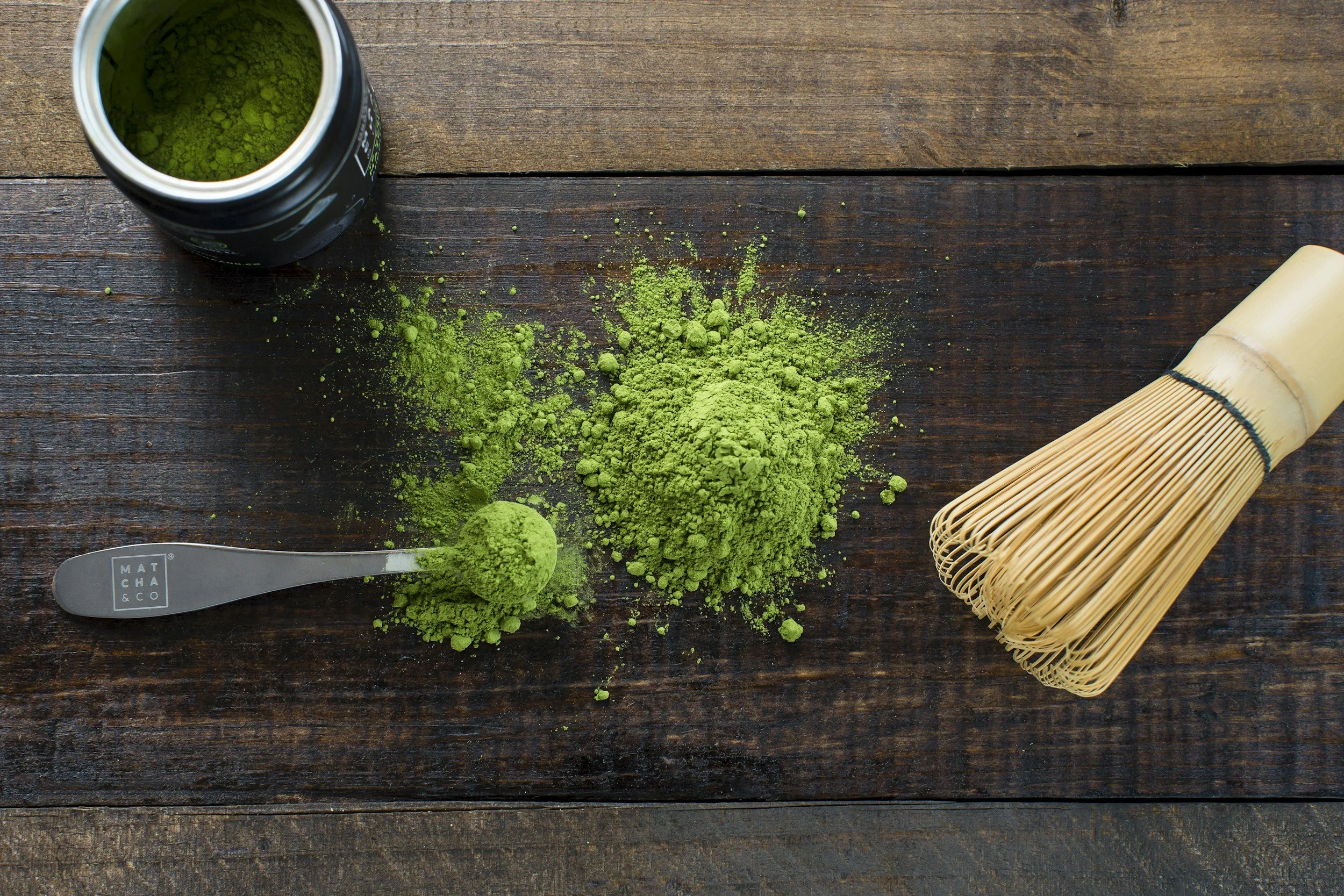
Matcha is more than just green tea and the latest obsession on TikTok and Instagram. Made from finely ground, shade-grown tea leaves, this Japanese beverage carries centuries of craft and ceremony. Behind the satisfying swirl of whisking videos lies a tradition rooted in precision, patience, and mindfulness. Here, Esha Ashar, co-founder of Yūzen Matcha, offers a beginner’s guide to understanding matcha with the sensibility of a sommelier.
There's a moment of anticipation when you first open a tin of matcha — a fleeting second before your senses engage with what lies inside. This moment reveals volumes to the trained eye, nose, and eventually, palate. Years of research and sampling of regional matchas across a broad quality spectrum, has led us to recognize that true matcha appreciation requires developing a sommelier’s sensibility.
First, A Visual Assessment
When evaluating matcha, we first use visual cues. We observe the powder in its undisturbed state. Exceptional matcha displays a vibrant jade green — a direct result of the amino acid composition developed during shading. This distinctive colour speaks to proper cultivation techniques where bamboo and cloth canopies have reduced sunlight by close to 80-90% during the critical three weeks before harvest.
Lower-quality matcha often betrays itself immediately through dull olive or yellowish tones, indicating either improper shading, late harvesting, or oxidation during processing. When assessing colour, natural northern light is essential — artificial lighting can mask these crucial colour distinctions.
Then, A Tactile Experience
Few consumers realise how revealing touch can be when evaluating matcha. An exercise to feel for specific quality is to gently place a small amount between thumb and forefinger. An exceptional matcha feels impossibly fine, almost creamy in its consistency, with particles measuring less than 10 microns.
The finest ceremonial grades create ‘the velvet touch’ — a sensation so smooth it seems to disappear into your skin. Culinary grades, by contrast, often present a slightly gritty texture that's immediately perceptible to trained fingers. This graininess isn't necessarily a flaw for cooking applications, but would prove distracting in specialty beverage preparation.
Aromas
Premier first-flush matcha presents a complex bouquet: vegetal sweetness reminiscent of steamed edamame, fresh-cut grass, and a distinct umami note often compared to nori (a Japanese seaweed). These primary aromas should be complemented by subtle floral notes (sweet pea blossoms or magnolia), indicators of leaves harvested at precisely the right moment.
The absence of these secondary aromas often indicates leaves harvested outside the optimal window of the Ichibancha (first harvest). Meanwhile, any hint of roasted notes, reminiscent of hojicha, suggests improper processing temperatures that have damaged the leaf's chemistry.
Whisking Ritual
The ultimate evaluation comes with preparation. Water temperature profoundly influences matcha's expression — too hot (above 80° Celcius), and catechins release excessive bitterness; too cool (below 70° Celcius), and the powder won't properly disperse its compounds. A good quality matcha disperses readily, forming a suspension with minimal effort. The chasen (bamboo whisk) should create a fine froth with microscopic bubbles that maintain integrity for several minutes — evidence of properly balanced saponin compounds within the leaf.
This froth isn't merely aesthetic — it's functional, distributing flavour compounds evenly throughout the liquid and creating the perfect delivery system for the palate. Lower-quality matcha often forms larger, unstable bubbles that dissipate quickly, or struggles to froth at all.
Importance of Harvest Timings
One of the most revealing quality indicators in matcha lies in its harvest timing.
First Harvest (Ichibancha): Imperial and ceremonial grades derive exclusively from first harvest leaves, collected during the narrow window that opens 88 days after spring begins (Hachijūhachiya). These young, tender leaves contain optimal concentrations of L-theanine, chlorophyll, and minimal fiber, creating matcha’s most prized health benefits.
Second Harvest (Nibancha): Culinary grades typically utilise second harvest leaves (collected in early summer), which develop during warmer temperatures. These mature leaves contain higher catechin levels and cellulose content, creating more pronounced bitterness and diminished amino acid sweetness. The robust structure stands up admirably to other ingredients (it cuts through bases better), with sufficient assertiveness to maintain matcha’s character when combined with dairy, sweeteners, or other strong flavours.
Kinds of Matcha
The Japanese tea tradition resists simplistic classification systems. Terms like ceremonial, imperial and culinary provide accessible entry points for consumers. Here’s a handy guide to distinguish between the three.
Imperial Matcha
The Imperial grade sits at the top of the spectrum, its colour an electric jade that catches light with a faint blue cast. Up close, the powder looks impossibly fine, almost creamy in the way it moves. The aroma is layered: sweet green notes that edge into seaweed and soft florals, clean and composed without any of the hay-like sharpness found in lower grades. On the tongue, it’s all silk — no grit, no drag — the froth fine and persistent. The flavour begins with quiet sweetness before widening into umami depth that stays long after you’ve swallowed, the finish smooth and nearly without astringency.
Ceremonial Matcha
Ceremonial matcha carries a brighter, more familiar green, the kind you expect when the whisk first meets the bowl. It smells freshly vegetal, with umami leading the way and just a trace of something floral beneath. The texture is balanced: smooth and even, but with a little more weight than the Imperial. Its froth holds well, small bubbles that catch the light without fuss. On the palate, it is measured; sweet and savoury in near-equal parts, with a clean, quick finish where a gentle astringency finally makes itself known.
Culinary Matcha
Culinary matcha feels different from the start. Its colour leans duller, green with olive or yellow tones, and its texture is less uniform, a touch coarse to the eye and the touch. The scent is straightforward, grassy and open, without the layers or restraint of finer grades. In the mouth, it has more presence, even a bit of grit, and the froth collapses sooner. The taste is punchy and direct: vegetal, slightly bitter, with a short finish that leaves a trace of astringency. It’s less about ceremony and more about utility—the kind of matcha that holds its ground in batter, dough, or cream.
Professional evaluators assess matcha across multiple dimensions like harvest timing: first flush (Ichibancha) typically yields the most prized leaves, harvested precisely 88 days after the beginning of spring (Hachijūhachiya). Cultivar characteristics, where each tea cultivar contributes distinctly to matcha's sensory profile, with selection representing one of the most crucial quality decisions in production. Regional terroir — even within traditional regions like Uji, subtle variations in soil composition and microclimate create distinctive expressions. And finally, processing precision, the de-stemming process (removing the leaf veins) must be thorough yet gentle enough to preserve leaf integrity; timing between harvest and steaming must not exceed several hours to prevent oxidation.
These details reveal more about matcha quality than any label ever could. By developing your sensory vocabulary and understanding the agricultural and cultural contexts behind Matcha, one can discover a depth of appreciation that transcends trendy consumption, connecting you to centuries of Japanese tea tradition.
RECIPE FOR A MATCHA LATTE
Ingredients
2g ceremonial-grade matcha powder (per serving)
Bamboo whisk (chasen) or a small regular whisk
Small sifter
Wide, shallow bowl
Water heated to precisely 80°C
Method
Pass 2g (about 1/2 teaspoon) of the vibrant powder through your sifter to eliminate any clumps.
Add a modest splash of heated water. Whisk thoroughly to create a smooth paste (koicha) — this small step prevents the disappointment of lumps.
Pour in another 60-70ml of water, setting the stage for the final technique.
Whisk in a deliberate "W" or "M" motion (never circles) until a fine layer of tiny bubbles forms on the surface.
A Note on Quality: The character of your matcha matters significantly. Look for powder with vibrant green color and sweet grassy notes. For an iced version, prepare with half the water, then pour over ice and add cold milk or water to taste.
Images credit: Yūzen Matcha
ALSO ON GOYA
